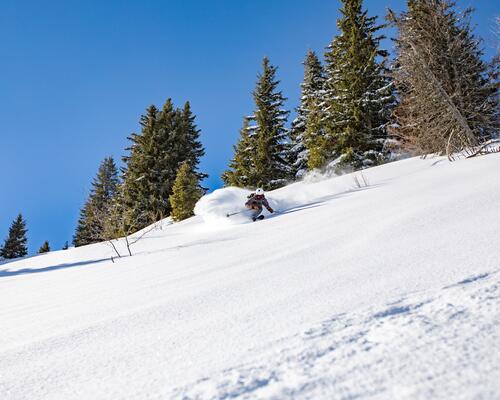Freeride ski specifications
Width of the skates of the freeride skis:
Freeride skis are equipped with wide runners between 95 and 140 mm wide under the boot to take off on powdery or packed snow. The grip and stability of the ski varies according to the width of the skate. It is important to choose the width according to the type of skiing you plan to do, whether it is in deep powder or on hard snow. The narrower the waist, the stronger the grip in hard snow. The wider the waist, the more comfortable and stable in different snow conditions
Ski camber :
This is the natural camber of the ski without weight on it. This is the entire shape of the ski, the camber of the ski is observed when it is laid flat on the snow. The more space there is between the middle of the ski and the ground, the higher the camber. The camber provides greater grip in hard snow because the foot exerts significant pressure. There are 3 types of camber. With an inverted camber, only the part under the foot is in contact with the snow, ideal in powder with wide skis and large skis for good buoyancy and lift. The classic camber provides good grip in hard snow. The flat camber is less used for this practice.
Les rockers des skis freeride :
With generous rockers and a flat tail, these skis pivot more in all types of terrain and snow with better cushioning of terrain variations. The rocker is literally the progressive unwinding of the tip, the inversion of the profile on the top of the ski before the tip. The tip is the last part that rises for a normal ski. With a rocker ski laid flat, the front end rises earlier than on a normal ski. Also, the rockers make it easier to get your skis out of the snow and pivot in powder.





